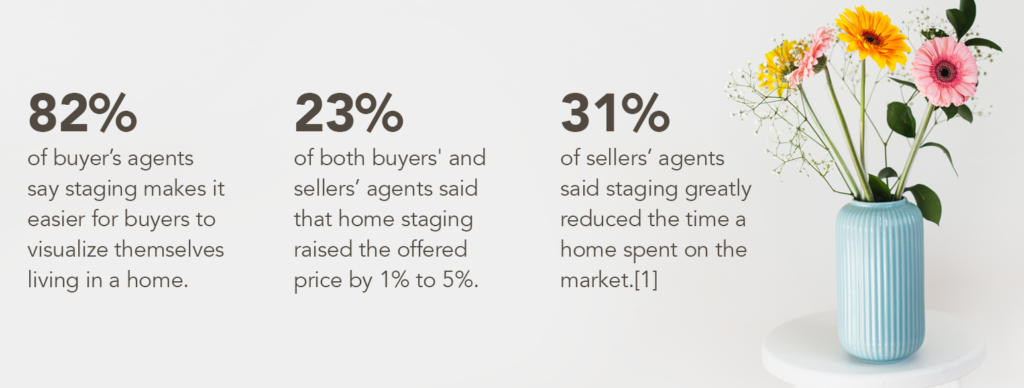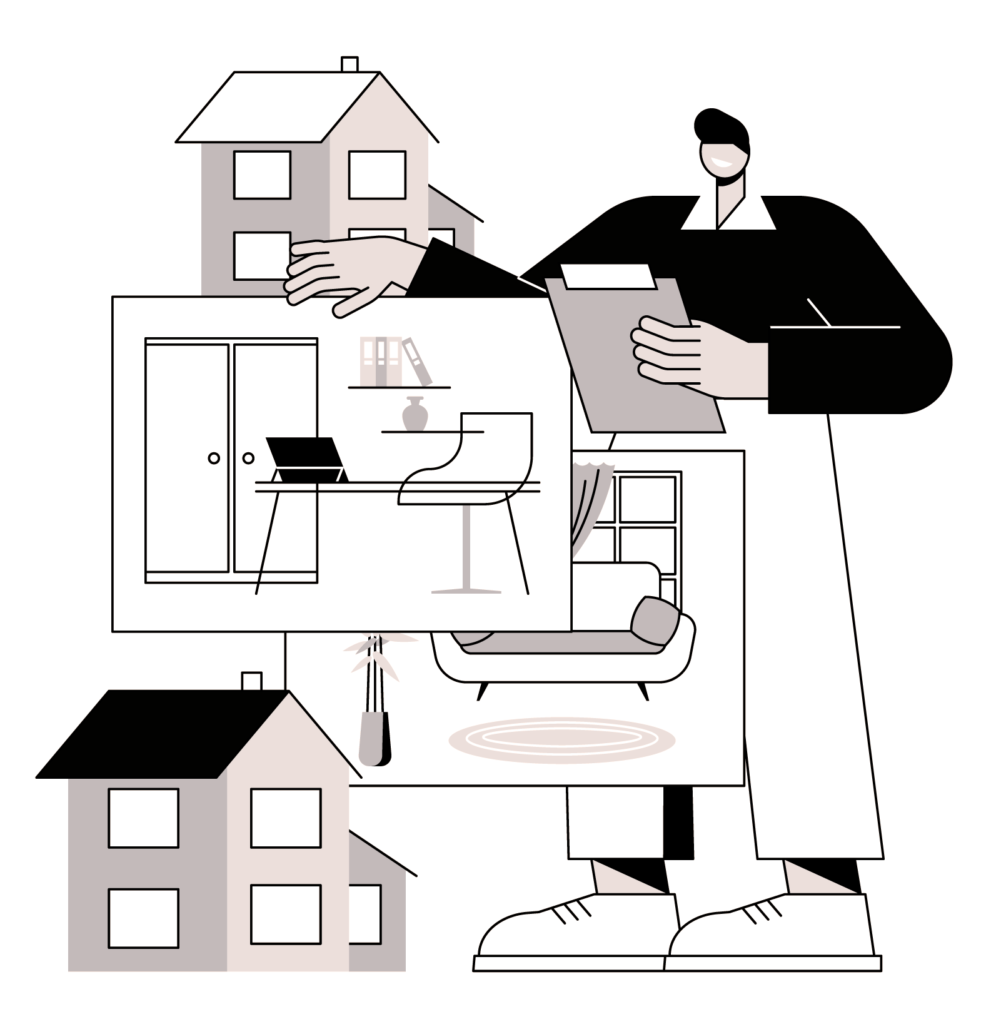
One of the intimidating things about putting your home on the market is the knowledge that total strangers will soon be traipsing through your house judging every part of it. Even if you are a Marie Kondo-level cleaner and organizer, you may wonder if your home will look good enough to draw the best possible price.
Home stagers understand your fear, and they’re here to help. They bring an impartial view to your house and see it through the eyes of a buyer. With services that range from simple decluttering and room organization to transforming the home with rental furniture and new décor, staging companies provide expert service when it comes to real estate marketing. And statistics show how much this can impact the home selling experience. Consider this:

This is why many sellers see home staging as a sound investment, and why it’s worth learning more about the process.
What Staging Is (and Isn’t)

Home stagers use design and organization to maximize your home’s appeal to potential buyers. This may involve painting walls, rearranging furniture, and moving excess belongings to storage to create more space. (For example, reducing the number of clothes in a closet makes the closet look significantly bigger, and thus more appealing.) It also puts a strong emphasis on removing clutter and clearing surface areas to give the space a clean, organized look.
In some cases, stagers may advise moving out some (or all) of the furniture in a room and replacing it with rental furniture to enhance the look of the space. This isn’t a reflection of your decorating taste, though! A big, comfortable couch is essential to enjoying your family’s movie nights, but if the couch is out of proportion to the room, a homebuyer will feel like the space is too small.
A stager can help you find rental furniture that makes rooms look spacious and functional, and they may be able to lend you certain decorative items (like wall art or artificial plants) as part of their service. However, you would pay the cost of the rental furniture, storage space, and transportation of items.
The main goal of staging is to allows prospective buyers to visualize themselves living in your space. When done correctly, staging:
- Makes rooms look bigger
- Presents a clean, organized look
- Enhances functionality of each room and showcases the potential of awkward spaces, like an under-stair closet or a narrow living room
- Depersonalizes the home so the buyer can imagine how it will look with their furniture, artwork, and paint colors
What staging doesn’t do is to trick buyers about any aspects of the house. For example, stagers won’t place a washing machine where there’s no water hookups. But by bringing in specific furnishings, a stager can make even the most awkward space look attractive and functional. The final effect doesn’t look staged … it just looks like a place where everything fits together.
The Financial Bottom Line
Costs vary by location, market conditions, time of year, and level of service provided. According to HomeAdvisor, the typical range nationwide is between $770 and $2,863, with an average of $1,766. Many factors affect cost, including:
- House size
- Location
- Whether your home is occupied
- Furniture purchase or rental (if needed)
- Repairs or cosmetic changes suggested by the stager, like painting
You can reduce costs by staging only certain high-profile rooms, like kitchens and living rooms, or by skipping renovations that the stager suggests. Consult with two or three companies (costs may range from $150 to $600 per consult), and compare prices and services to make sure you get the best deal.[2]
To Stage or Not to Stage?
Unfortunately, like most decisions, there’s no universal answer. Consider these factors, and feel free to ask your real estate professional about their experience and recommendations. There’s no right or wrong answer here … just what works for you and helps lessen your home selling stress!
Pros
- Stagers are design pros who can help you arrange your furnishings (or rented/borrowed items) in a way that’s perfect for your home’s configuration.
- You get an objective (and trained) eye to identify problem areas that may deter buyers.
- Rented furniture may be in better condition or of higher quality than what you currently own, and it allows you to incorporate the most on-trend designs.
- The staging process removes clutter and makes rooms look more spacious.
- Staged homes look better in photos for online listings, which may increase showings and get the home sold faster.
Cons
- The cost, both for staging and (if applicable) storage, must be paid out of pocket before your home sells and decreases your net profit.
- Because you’ll need to move some belongings before staging, you’ll have to start packing sooner.
- You’ll have to move belongings twice if you don’t have a new home yet.
- If your current furniture is hiding any imperfections (like scratched flooring), staging might reveal them. That may create unplanned repair projects.
- Staging adds an additional planning step that takes time. Your home may sell faster, but it may be delayed getting on the market.
Contact Midwest Family Lending with further questions. (515) 252-7107 or email info@midwestfamilylending.com
Sources

